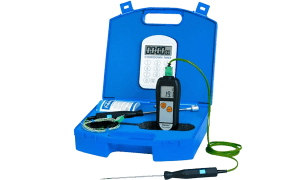Cooling Tower services

If you are responsible for a cooling tower and require an independent cooling tower risk assessment or review of the tower and control programme, GeoPure is the right company for you!
Cooling Towers & Evaporative Condensers

These systems either circulate water through a heat exchanger to remove heat from a process or system then pass it through a tower to cool (“open type”) or they are configured with the heat exchanger within the cooling tower (“closed type”), usually comprising horizontal tubes known as coils. If the coils contain refrigerant, the cooling tower is known as an evaporative condenser. Within the cooling tower the water flows down over the fill pack or coils and is either broken into droplets or formed into films causing some of the water to be evaporated. The remaining water continues to circulate through the system with make-up water being added to compensate for that lost through evaporation. This process produces large quantities of aerosols. Fans on mechanical draught coolers which force air across or against the flow of water to assist the evaporation (and hence cooling) process can blow the aerosols, known as “drift”, into the atmosphere unless control measures are in place, i.e. drift reducers (eliminators). High-efficiency drift eliminators, when fitted correctly, significantly reduce the amount of aerosol released into the atmosphere.
Standard requirements that should be In every Risk Assessment
The design of the system will be checked to ensure that water does not become stagnant in dead legs, blind ends, duty/stand-by equipment (including towers and pumps), or in parts of the systems switched off or isolated for periods of time, or which experience poor flow conditions in balance pipes on towers and by-pass systems, etc. If any design faults are identified, recommendations will be made that they are rectified.
 An important consideration in the safe operation of evaporative cooling plant is that it is maintained in a clean condition and that the water circulating through the system is kept clean. An assessment of cleanliness is therefore a key measure in the control scheme, and the risk assessment has to include an appraisal of the ease with which this can be achieved. Consideration ought to be given to safe and effective access to key components in the system, such as packing material in cooling towers, heat exchangers, and other internal surfaces that could be prone to build up of biofilm and other contaminating material. ACoP L8 provides guidance on the frequency with which such cleanliness
An important consideration in the safe operation of evaporative cooling plant is that it is maintained in a clean condition and that the water circulating through the system is kept clean. An assessment of cleanliness is therefore a key measure in the control scheme, and the risk assessment has to include an appraisal of the ease with which this can be achieved. Consideration ought to be given to safe and effective access to key components in the system, such as packing material in cooling towers, heat exchangers, and other internal surfaces that could be prone to build up of biofilm and other contaminating material. ACoP L8 provides guidance on the frequency with which such cleanliness
checks ought to be performed and there is additional practical guidance available, in particular relating to cooling tower packing material (http://www.hse.gov.uk/legionnaires/coolingtowers.htm). Consideration ought also to be given to the means by which dirty components might be cleaned and any difficulties highlighted in the risk assessment. Only when sufficient controls are in place, and the system is maintained in a clean condition and a good state of repair, would such a system be classed as operating at minimal risk.
Microbiological and chemical testing of the cooling tower make up water and system water should also be conducted to cover the weekly, monthly and quarterly tasks as recommended in the HSE’s ACOP L8 guidance document. We can conduct cooling tower sampling on an adhoc basis, routinely or as part of the cooling tower risk assessment.
Equipment, Biocides and Chemicals
We supply all the chemicals and dosing equipment required in order to keep your system running safely. Please click here for more information.
We also clean and disinfect cooling towers as well as offer repair and re-lining of corroded surfaces using our solvent free polyurethane which has been specifically formulated for these applications.
